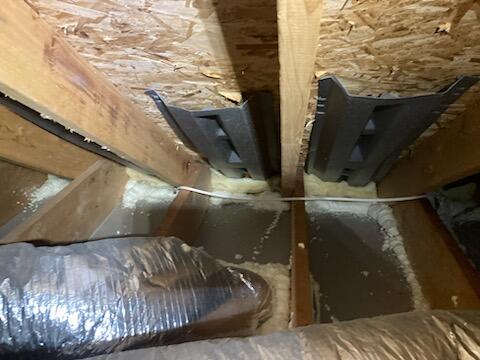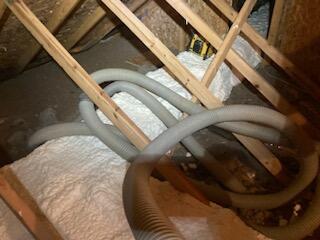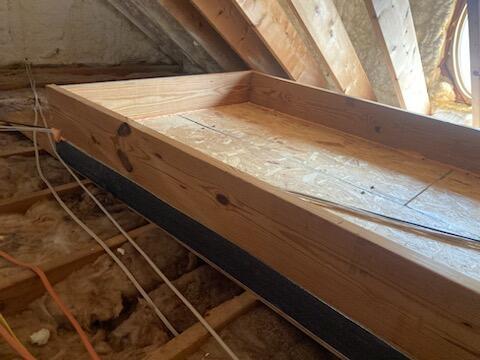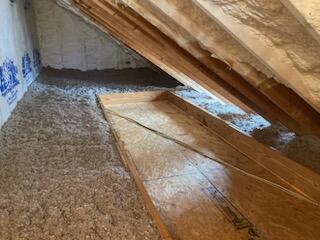
Under Insulated Attic
The insulation currently in the attic does not fill the floor joists nor does it offer enough R-value to resist the transmission of heat from the attic to the rooms below or the loss of conditioned air from the living space to the attic.

Air Sealing & PVs
Spray foam is used to seal around utility penetrations, reducing the loss of conditioned air between the living space and the attic. The gray/silver rectangles between the rafters are PVs (proper vents) and prevent the insulation from blocking the soffit vents to allow proper ventilation for the roof.

Insulated Ductwork
The trunk line is insulated with spray foam insulation to reduce the impact of the attic's extreme temperatures on the air inside the ductwork. This prevents cold air coming out of your air handler from being warmed up by the stagnant hot air in your ducts during hot summer months (and the reverse in the winter). The hose you see in the photo is used to blow in cellulose insulation.

Storage Decking
Many homeowners like to use their attic for storage space and need access to ductwork and air handlers for service persons. In these cases, we install Storage Decking. The plywood decking sit on top of thick insulation foam board and cellulose is dense packed underneath it to provide the proper insulation value and keep your storage and walking path!

Blown In Cellulose Insulation
With the attic air sealed, PVs and decking installed, the attic is ready for a fresh blanket of R-60 cellulose insulation. Cellulose is 85% recycled material and 15% new material. It is fire retardant and contains borate, which is an irritant to pests, helping to deter them.

